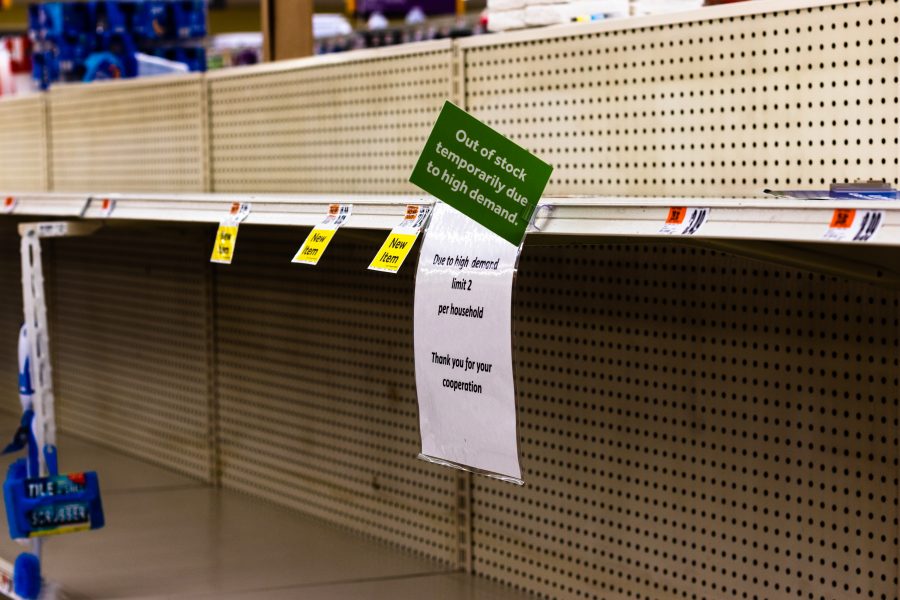Op-Ed: An End to COVID-19’s Consumer Supply Shortages?
For now, we can only wait for the “Not Available” button to become “In Stock.”
In March 2020, customers cleared grocery store shelves as the pandemic’s supply chain crisis escalated.
Teenagers: When was the last time you had to buy something? Maybe it was a new pair of Nike Air Force 1 sneakers or a new graphics card for your computer. If you’re like the other millions of teens ordering consumer goods during the past year or two, you’ve experienced the effects of the global supply chain crisis.
The global supply chain crisis has been plaguing the global economy since 2020, and it likely won’t stop until mid-2022 to 2023, according to a Business Insider report. It’s affecting transactions across the globe and here at the School.
The global supply chain crisis affects multiple aspects of our economy, including significant delays in production, upticks in prices, and a shortage of consumer goods.
In this mess caused by the crisis, scalpers have started buying in bulk and selling items for two or three times its manufacturer-suggested retail price (MSRP). A computer part such as an RTX 3060 Ti GPU that would typically cost $400 MSRP now costs $835.
Origins of the Crisis
The global supply chain crisis isn’t a result of just one thing. The pandemic has been one of the most significant factors affecting the global supply chain crisis. When the pandemic began in 2020, followed by lockdowns, many corporations shut down their factories.
During the height of 2020’s lockdowns, consumer demand weakened, and factories didn’t need to run at full production. However, with the more recent ease in safety protocols, factories can’t keep up with an explosion of consumer demand.
Products from companies like Sony are still back-ordered for months. On November 12, 2020, Sony’s new innovated gaming console, the PS5, was released. Today, people are still waiting to get their hands on one.
The global supply crisis isn’t only affecting the gaming industry. It’s affecting the entire economy.
Since the consumer demand skyrocketed back in 2021, the demand still hasn’t found equilibrium.
Effects on the School
The global supply chain crisis isn’t only affecting companies and individuals—it’s affecting schools as well. The global supply shortage affects the price of just about everything, and its impact is also felt here.
Creative Arts Department Chair Bill Jacob stated that the price of wood, which Stagecraft students use to build sets, “has definitely affected us.”
“Inflation, in general, has raised the cost of putting up the productions,” Jacob said.” [The wood] costs, on average, 35 percent more than it did last year.”
Luckily, this uptick isn’t stalling the School’s high school musical, Joseph and the Amazing Technicolor Dreamcoat, which premieres tonight.
While the global supply chain crisis isn’t permanent, it’s easy to feel otherwise.
Experts believe that things will go back to normal in 2023. For now, we can only wait and watch for the “Not Available” button to become “In Stock.”






















































